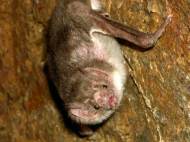Vampire bat venom may lead to novel drug design
 Researchers at the University of Queensland (UQ) School Of Biological Sciences have discovered that vampire bat poison contains molecules capable of evading the victim’s immune system. This research not only contributes to the better understanding of haematophagous animals venoms but also provides a rich resource for novel compounds that could be used in drug design and development.
Researchers at the University of Queensland (UQ) School Of Biological Sciences have discovered that vampire bat poison contains molecules capable of evading the victim’s immune system. This research not only contributes to the better understanding of haematophagous animals venoms but also provides a rich resource for novel compounds that could be used in drug design and development.
Vampire bats are the only mammals that feed entirely on blood. They typically live in colonies of about 100 animals, but sometimes those colonies get more than 1,000 bats. They hunt during the darkest part of the night, and their usual victims are sleeping cattle and horses. However, they do occasionally feed on people. Although vampire bats don’t remove enough blood to harm their host, their bites can cause severe infections and eventually disease.
In spite of the fact that vampire bat oral secretions have been the subject of intense research, only two molecules have been focused: Desmodus rotundus salivary plasminogen activator (DSPA) and Draculin. The research team discovered a much more complicated and complex secretion profile than it had been thought. They showed entirely new forms of anticoagulants in the venom as well as new components that cause vasodilation of the small arteries near the skin.
“Just as snake venom has developed rapidly to stay ahead of evolving resistance in prey, vampire bats are rapidly evolving their venom to prevent the immune system of the prey from generating antibodies against the venom molecules”, said Bryan Fry, UQ’s Associate Professor.
According to UQ researchers, vampire bats secreted various forms of the same active molecules with multiple changes in the surface of the molecule as a result of the mutation of the surface chemistry. Although an antibody can be generated to fight against one type of venom molecule, the variation of venom molecules enables evasion of the victim’s immune system and keeps the blood flooding. So, the same victim can be fed on night after night.
This study has revealed a great deal of new molecules in vampire bat venom, which have huge potential to yield new treatments for stroke and high blood pressure.
For more information, read the article published in The Journal of Proteomics: “Dracula’s children may lead to novel drug design“.









Leave your response!